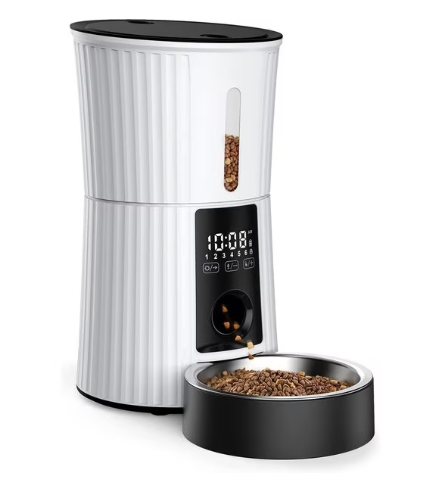
Let’s take a minute and take a look at the dog feeder. Picking the right dog feeder can pay huge dividends when it comes to your pet’s overall well-being. You see, the type of feeder you choose can have a substantial impact on your pet’s eating habits and health. Let’s dig a bit deeper:
Our four-legged companions are unique in their needs, and hopefully this article will help you understand how to match those needs with the perfect dog feeder. In this guide, you’re going to find out about the key things to consider: from the size of your dog to their unique health requirements.
This isn’t just about deciding between plastic or stainless steel, or choosing the fanciest gadget on the shelf. It’s also about ensuring that the feeder you pick supports your dog’s health, fits into your lifestyle, and aligns with your pet care values. Hopefully, this guide below will assist you in identifying your pet’s needs and help in the selection process. Let’s get started.
Disclosure: This post may contain affiliate links, which means I may earn a small commission, at no cost to you, if you make a purchase through a link.
Assessing Your Dog’s Feeding Needs
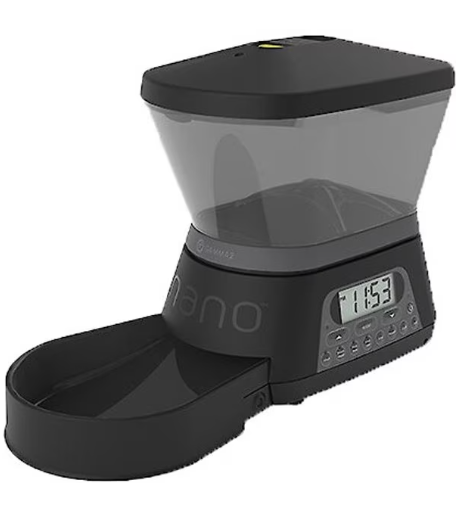
- Dog Size – Choosing the right dog feeder isn’t just about style or convenience; surprisingly, it may also affects your dog’s eating pattern and health. Let’s start with your dog’s size. A Great Dane and a Chihuahua have different needs, and their feeders should reflect that. It’s critical to ensure the feeder’s height and bowl capacity are appropriate to prevent strain on the neck for larger breeds or an intimidating pile of food for smaller ones. Makes sense, right?
- Dog’s Age, Eating Habits – Okay, let’s consider your pet’s age and eating behavior. Pretty obvious that puppies and senior dogs will require special feeding needs. Our adorable puppies are like little balls of energy and may need a feeder that can accommodate multiple small meals throughout the day, while older dogs might benefit from an elevated feeder to ease joint pain. Fortunately for us, the dog feeder can be found in various styles to meet these specific needs.
- Special Diets – Let’s assume for a second that your local veterinarian has suggested that your best buddy be placed on a special diet. Perhaps your pet could lose a few pounds, or suffers from a sensitive stomach, etc. As a result of these concerns, you may want to consider an electric dog feeder to ensure precision in meal portions and timings. This type of dog feeder has become quite popular with dog owners.
- Lifestyle – Yours – Finally, consider how often you’re home to feed your furry friend. If you’ve got a packed work schedule or enjoy the nice weekend getaways, an automatic feeder could be your ally, making sure your dog gets fed on time, every time. You’ll want something reliable and easy to program. Okay, with these points in mind, let’s next delve into the variety of dog feeders available and what they can offer.
Types of Dog Feeders and Their Benefits
Choosing a dog feeder shouldn’t be just about picking a bowl that holds kibble. From the information we covered above, let’s now take a look at the variety of dog feeders on the market today. This will help in presenting all of these dog feeders in one place. There are a few main types: gravity feeders, electronic feeders, slow feeders, and elevated feeders, each catering to different needs. Let’s break each one down in further detail.
- Gravity Dog Feeder – This product would be an ideal choice for dogs who self-regulate their food intake. They use gravity to ensure that the bowl is always filled, which can be a lifesaver for busy pet parents. However, they may not suit dogs prone to overeating, as the constant supply can lead to weight issues.
- Electronic Dog Feeders – These feeders bring technology into play. Dog parents are able to program this specific dog feeder to provide specific portions at designated times, which helps with portion control and regular feeding schedules. This is a significant advantage for pets on a strict diet or those who require frequent, small meals. But remember, these feeders usually need a power source and may be on the pricier side.
- Slow Dog Feeders – Designed with ridges or mazes, they make dogs work a bit harder for their food, reducing the risk of bloat and improving digestion. This type isn’t a technological marvel, but it’s effective for speed eaters. Tend to be on the lower price range.
- Elevated Dog Feeder – These elevated feeders sit higher off the ground, often recommended by veterinarians for larger breeds or dogs with joint issues. The raised height can reduce strain on the neck and improve posture during feeding. Just make sure they’re stable so they don’t tip over during mealtime.
————————————————-
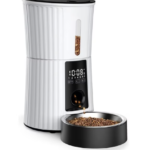
PATPET Timed Automatic Smart Feeder for Dog & Cat Food Dispenser with 10s Voice Recorder (Electronic)
DETAILS
- Automatic feeder’s touch screen design is easy to use.
- Features a paw-some voice recorder, so you can record a message for your furry friend.
- Moisture-proof, airtight feeder keeps food fur-esh.
- Removable bowl is dishwasher-safe.
- Battery backup comes in handy, so your furry friend won’t miss meal, even if the power goes out.
CLICK HERE FOR FURTHER DETAILS
———————————-
Outward Hound Fun Feeder Slow Feeder Dog Bowl
DETAILS
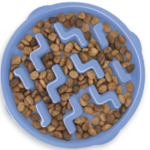
- Paw-fect for dogs who need to slow their pace a little, this slow feeder dog bowl can help your pup enjoy his meals up to 10 times slower.
- The shallow dog bowl features a simple, slow feeder maze design.
- Supports proper digestion and helps prevent common issues that arise in fast-eating dogs, including overeating, bloat, regurgitation, and canine obesity.
- Non-slip base helps hold the bowl in place and prevent spills.
- It’s top-rack dishwasher safe for easy cleanups—just be sure to use the low heat setting.
CLICK HERE FOR FURTHER DETAILS
———————————————————
Internet’s Best Traditional Non-Skid Elevated Dog Bowl
DETAILS
- The elevated dog feeder encourages your dog to have better posture as he chows down during meal time.

- Crafted from durable wood and stained with an espresso finish, this feeder has elegant slats on the side to complement almost any household.
- Comes equipped with 2 stainless-steel bowls for food and water.
- The stainless-steel dog bowls are dishwasher safe for easy cleaning.
- Improving your pup’s posture can help promote healthier digestion.
CLICK HERE FOR FURTHER DETAILS
——————————————————–
Selecting the right type of dog feeder really comes down to the needs of your canine. Hopefully, you now have a better understanding of the number of options that are available to you. With that said, let’s go ahead and turn our attention to the different materials from which dog feeders are made. This information may impact your decision on which feeder you choose.
Materials and Durability: What to Look For

Plastic Dog Feeders are lightweight and usually cost-effective, but they can harbor bacteria over time and may not hold up well to enthusiastic eaters. It’s crucial to select BPA-free plastics to ensure they don’t release harmful chemicals. If you’re considering plastic, also think about the inevitability of scratches and the potential for replacing it more often.
Stainless Steel Dog Feeders stands out for its durability and ease of cleaning. These feeders are not only tough enough to resist chewing and scratching but are also generally dishwasher safe. Plus, stainless steel is a non-porous material that doesn’t hold onto bacteria, making it a hygienic choice for your furry friend.
Ceramic Dog Feeders add a touch of elegance to your pet’s dining area and are weighted to help prevent tipping. Although they’re typically easy to clean, they can chip or crack if dropped, which may lead to injuries or the growth of bacteria in crevices. Always inspect ceramic feeders regularly for signs of damage.
For those who are eco-conscious or seek a lightweight option, silicone feeders are flexible and often collapsible, ideal for travel. They’re also easy to clean, usually dishwasher safe, and safe from harmful chemicals. The elasticity of silicone makes it less likely to break, but watch for teething dogs who may find it a fun chew toy.
Once you’ve decided on the safest, most durable material for your dog’s new feeder, it’s time to seamlessly integrate it into their routine. Transitioning to a new feeder can be a smooth process with the right approach. In the next section, I’ll guide you through best practices for making the new feeder a welcome addition to your dog’s mealtime.
Integrating the Feeder Into Your Dog’s Routine
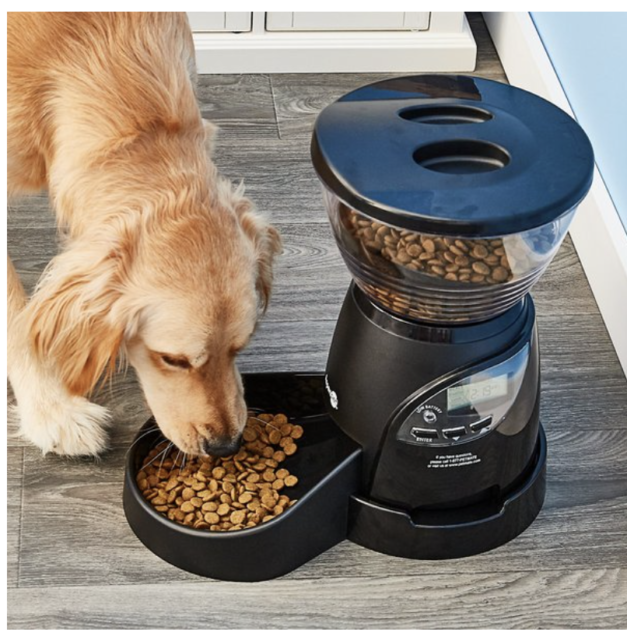
Now that you might have a particular dog feeder in mind by this time, blending it seamlessly into your dog’s life is the real game-changer. Starting right can set the tone for a smooth transition.
I’ll walk you through some tried-and-tested practices to introduce your dog to their new feeder. This isn’t just about getting them to use it—it’s also about ensuring they’re comfortable and sticking to a healthy feeding routine.
When you first bring home the new feeder, place it where the old one used to be. This will help your dog associate the new device with their regular feeding spot. Be patient, as some dogs might be wary of new items.
You can always adjust your approach down the road, but initially, keep the feeding schedule the same. Consistency is key. Once your dog is comfortable with the new feeder, you might find that you can optimize feeding times based on their activity levels.
Keep an eye on how your dog interacts with the new feeder. Are they hesitant or do they dive right in? Adjust the height, position, or even the location if needed. The goal is to make mealtime as stress-free as possible.
Sometimes, for feeders with interactive elements, like puzzle feeders, you may need to show your dog how it works. Use treats to make it a fun learning experience. They’ll likely catch on quickly and enjoy the challenge.
Remember, your dog’s reaction to their feeder will give you clues about their overall comfort. Take notice if they seem distressed or if they’re not eating as they should. Don’t be afraid to revert to the old feeder while reassessing your options, if necessary.
Final Thoughts
Well, there you have it. You have now entered the world of dog feeders which represent more than just a basic container. We have taken a deep look at specific feeding needs of our pups, types of dog feeders, materials used and finally the integration process. Furthermore, we learned of the benefits associated with these products and what to consider before obtaining one.
The best dog feeder on the market is the one that meets the needs of your pet! We started this article by stating the obvious, every pet is unique in some way or another. This also includes their feeding habits. As dog owners, we want the very best for our pets, keeping them healthy and happy as long as possible. These dog feeder products can most definitely play a vital role in accomplishing this.
I sincerely hope this article has brought some value to you, and helps in the selection process. Thanks for visiting my site, and feel free to leave a comment below should you have any questions. To the health of your pet!
0 Comments